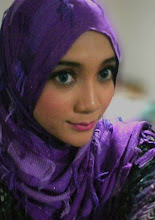The 44 km2 city adjoins Karanganyar
Regency and Boyalali Regency to the north, Karanganyar
Regency and Sukoharjo Regency to the east and west,
and Sukoharjo Regency to the south. On the eastern side of
Solo lies Bengawan Solo River. The city is the seat of Surakarta Sunanate
Palace. Together with Yogyakarta, Surakarta is the heir of the Mataram
Kingdom that was split into two kingdoms in 1755.
My family and I had the privilege to explore Keraton
Kasunanan Surakarta; A Javanese Palace with European Touch; an ancient
city built by Paku Buwana II. History of this city cannot escape from history
Kasunanan Surakarta Sultanate Palace which is the successor dynasty Islamic
Mataram Kingdom which was built by Panembahan Senopati.
Its location is in Solo city, only about 60 kilometres east of
Jogja, 1.5 hours by car or an hour of train ride.
Keraton Surakarta Kasunanan has a
total of approximately 500 meters X 700 meters, surrounded by a defensive wall
(fortress) called the bastion. The wall surrounding the palace is as high as 3
to 5 meters, about 1 meter thick, with a rectangular shape.
 |
| Horse-carriage "Andong" |
Keraton Surakarta which
can be seen now is not the original form of the building early in the Paku
Buwana II. Gradually, the palace buildings have been renovated several times
while still maintaining the original spatial archetype. Renovation massively
committed during the reigns of X Buwana Paku between 1893-1939. Within the
biggest renovation, the palace buildings began to adopt European-style
buildings with white and blue shades of colour that became typical of the
kingdom.
From the front of the Palace you will
see the typical structure of the old town of Java, which is a palace building,
is surrounded by the town square, Klewer Market, and the Great Mosque of
Surakarta. Entering the front of the palace, tourists can see the building
called Sasana Sumewa and a cannon from bronze named Kiai Rancawara.
The Sculptures (like the picture on the left) are seen around
Keraton. Those are gifts from the King of Greek, Rome, Vatican, Egypt, and so
forth. As a form of honour those are put in front of the Sasana
Sewaka. Sasana Sewaka is used as place for the king to sit during royal
ceremonies.
Blue and green colours cover the most
part of Keraton. Blue represents peace while green represents coolness.
Including in the Entrance fee, we also
visited the Museum Keraton Surakarta Sultanate. Where we can witness the
legacy objects Kasunanan Surakarta Palace and several temples fragments found
in Central Java. In the first room, we can see objects that are never used as a
cooking appliance courtiers (servant king), like the cormorant, bowls, and some
equipment from the pottery. There are also rooms used to exhibit ancient
weapons such as spears, swords, cannons, until the gun used by the ancient
family palace. Various art equipment commonly displayed in Kraton Surakarta,
such as gamelan and masks, are also exhibited in this museum. Another
interesting collection that can be enjoyed is a golden carriage, along the
5-meter canoe paddle, and oversized hats Buwana VI Nails, Nails Buwana VII, and
X. Buwana Paku.
Located next to the museum is Sasana Sewaka. When first I entered the yard inside the Keraton, beach sand infiltrated my flat shoes. The whole yard was filled by sand. We found difficulty in walking. My dad was the only one who had to put off his sandals because based on the regulation, no sandal is allowed. So, better put on shoes if you don’t want to walk barefoot. And other thing, no shorts. If you wear shorts, they will provide you batik trousers. The Sand was all taken from Pantai Selatan (The South Coast) and Mount Merapi. In this Sewaka Sasana environment, tourists are prohibited from taking or carrying fine sand contained in the venue.
In this area there is also a tower
called Panggung Sangga Buwana.
There are 5 levels of it. This sacred place is used for the King to meditate
and communicate with Nyai Roro Kidul who rules the South Coast. The 5 levels
refer to Pancasila. The way a King meditates is based on his religion.
To be able to enter into this tower, a special clothing must be worn. Unfortunately I did not know of this rule so we weren't lucky enough to explore this mysterious tower.








0 comments:
Post a Comment